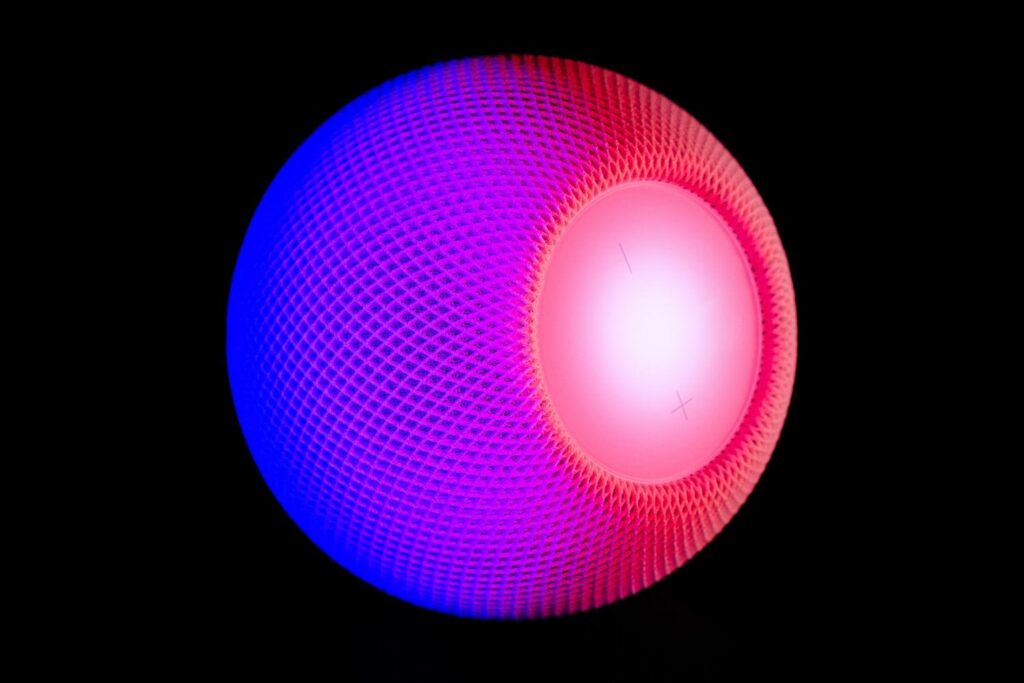How Can Wearables Help Manage Stress Proactively?

IoMT, Technology
Stress is everywhere, but peace is hard to find. How can we relax when life drains us dry? Luckily, wearables are here to help. They don’t just track our stats anymore. They also watch for stress and soothe us with gentle nudges. A gadget that cares and protects—that’s the new way to chill, and it’s wearable.
Stress is a widespread issue that affects millions of people globally. It can negatively impact our physical and mental health, causing insomnia, anxiety, depression, heart disease, obesity, and Alzheimer’s. While some stress is inevitable and beneficial, chronic or excessive stress can harm us and interfere with our quality of life.
Fortunately, there are many ways to cope with stress, such as meditation, exercise, therapy, hobbies, and social support. However, we may need to be made aware of how stressed we are or need more time or resources to access these coping strategies. This is where wearables can come in handy.
Wearables are devices we can wear on our bodies, such as smartwatches, fitness trackers, rings, bracelets, or headbands. They can monitor our health and well-being, such as heart rate, blood pressure, sleep quality, activity level, and mood. Some wearables can also provide feedback or interventions to help us manage stress proactively.
How Do Wearables Monitor Stress?
Wearables can monitor stress differently, depending on the device and the technology used. Some of the most common methods are:
1. Heart Rate Variability (HRV)
HRV represents the fluctuations in the duration between successive heartbeats. It reflects the balance between the sympathetic nervous system (SNS), which activates the fight-or-flight response to stress, and the parasympathetic nervous system (PNS), which activates the rest-and-digest response to relaxation. A higher HRV indicates a more flexible and resilient nervous system that can adapt to changing situations. A lower HRV indicates a more rigid and stressed nervous system that can cope less well with challenges.
2. Electrodermal Activity (EDA)
EDA is the change in the skin’s electrical conductivity due to sweat secretion. It reflects the activity of the SNS, which increases sweat production when we are aroused or stressed. A higher EDA indicates a higher level of stress or emotional intensity. A lower EDA indicates a lower level of stress or emotional calmness.
3. Galvanic Skin Response (GSR)
GSR is another term for EDA, which measures the same phenomenon but with different units. GSR is measured in microsiemens (µS), while EDA is measured in microsiemens per second (µS/s).
4. Skin Temperature
Skin temperature is the temperature of the surface of the skin. It reflects the blood flow to the skin, which the SNS regulates. When stressed or anxious, the SNS constricts the blood vessels in the skin to divert blood to the vital organs. This lowers the skin’s temperature. When we are relaxed or calm, the SNS dilates the blood vessels in the skin to increase blood flow and heat dissipation. This raises the skin’s temperature.
How Do Wearables Help Manage Stress?
Wearables can help manage stress differently, depending on the device and the features offered. Some of the most common ways are:
1. Feedback
Wearables can provide feedback on stress levels by displaying metrics such as HRV, EDA, GSR, or skin temperature on a screen or in an app. This can help us become more aware of our stress level and how it changes throughout the day or in different situations. This can also help us identify triggers or patterns of stress that we may not notice otherwise.
2. Alerts
Wearables can alert us when our stress level is too high or too low by sending notifications or vibrations to our device or app. This can help us take action before stress becomes overwhelming or harmful. For example, we can take a break, do breathing exercises, listen to music, or talk to someone.
3. Interventions
Wearables can provide interventions to help us reduce stress or enhance relaxation by delivering stimuli, such as sounds, vibrations, lights, or images to our device or app. These stimuli can be based on the principles of biofeedback, neurofeedback, mindfulness, meditation, or cognitive behavioral therapy. For example, we can follow a guided breathing program, listen to soothing music, watch calming scenery, or receive positive affirmations.
4. Gamification
Wearables can make stress management more fun and engaging by incorporating gamification elements, such as goals, rewards, challenges, or social interactions. This can motivate us to monitor our stress levels and practice stress management techniques more regularly and consistently. For example, we can earn points, badges, or trophies to achieve certain stress levels or complete certain tasks. We can also compete or cooperate with other users or friends.
What Are Some Examples of Wearables for Stress Management?
There are many wearables available in the market that claim to help with stress management. Some of the most popular ones are:
1. Oura Ring
The Oura Ring is a smart ring that tracks HRV, skin temperature, sleep quality, and activity level. It provides feedback on your readiness, sleep, and activity scores on an app. It also offers personalized insights and tips to help you improve your health and well-being.
2. Apollo Wearable
The Apollo Wearable is a device you can wear on your wrist or ankle. It delivers gentle vibrations designed to stimulate the PNS and restore balance to the nervous system. It offers seven modes to help you with energy, focus, relaxation, sleep, and more.
3. Apple Watch Series 8
The Apple Watch Series 8 is a smartwatch that tracks heart rate, blood oxygen level, sleep quality, and activity level. It provides feedback on your health metrics on a screen or an app. It also offers features such as Breathe, Mindfulness, and Fitness+ to help you with stress management.
4. Bellabeat Ivy
The Bellabeat Ivy is a smart bracelet that tracks EDA, GSR, skin temperature, and activity level. It provides feedback on your stress level and mood through an app. It also offers features such as guided meditations, breathing exercises, and wellness tips to help you with stress management.
5. Muse Headband
The Muse Headband is a device that you wear on your forehead. It tracks brain activity (EEG), heart rate, breathing, and body movements. It provides feedback on your meditation performance on an app. It also offers features such as real-time audio feedback, guided meditations, and challenges to help you with stress management.
6. Garmin Smartwatch
The Garmin Smartwatch is a smartwatch that tracks HRV, blood oxygen level, sleep quality, and activity level. It provides feedback on your stress level and body battery on a screen or an app. It also offers features such as relaxation reminders, guided breathing, and wellness programs to help you with stress management.
Conclusion
Stress is a widespread issue that affects our health and well-being. Wearables can help us manage stress proactively by monitoring our stress levels and providing feedback, alerts, interventions, or gamification. However, wearables are not a substitute for professional help or other coping strategies. They are the only tools that can complement our efforts to reduce stress and improve our quality of life.
- Health
- healthcare













































